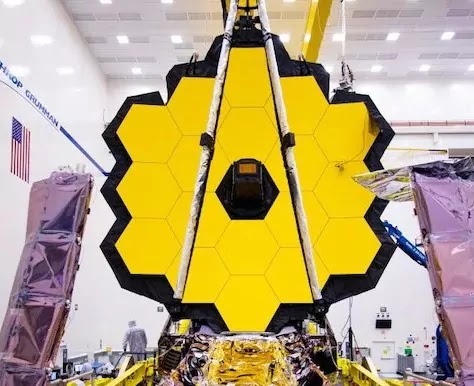NASA launches its long-awaited $10 billion James Webb Space Telescope after more than 25 years of development and delays, which would be help scientists to know more about early stages of our universe.
NASA’s has Launch James Webb Space Telescope from French Guiana on South America’s northeastern coast, riding a European Ariane rocket to the sky on Saturday on the occasion of Christmas celebration.
James Webb Space Telescope, named after a NASA administrator from the Apollo era and its first big telescope to rocket past Earth's atmosphere since the Hubble Space Telescope, which launched in 1990.
The mission, an international project led by NASA a collaboration between the European Space Agency, and the Canadian Space Agency, is six times larger and 100 times more powerful than its predecessor.
Over the next six months it has involve a series of careful maneuvers for some automated, others manual, it has to unfold itself, align its mirrors, calibrate its instruments, cool to a frigid minus 380 degrees Fahrenheit, and travel 1 million miles from Earth.
It will take about a month for Webb to reach its destination: an orbit around the sun, trailing Earth by 1 million miles, which is about four times the distance between the moon and Earth.
James Webb Space Telescope also known as Webb has two major components: a hexagonal mirror made of 18 gold-coated segments and a sunshield the size of a tennis court, which deflects sunlight to keep the telescope cool. Both were too large to fit in a rocket, so NASA folded them up like a drop-leaf table.
Webb's design includes 344 unique mechanisms with no backup it means it any one fail unable to fix, hence each must work perfectly for the telescope to function. About 80% of those points are part of the two-week unfolding process, hence James Webb Space Telescope will then spend about four months aligning and focusing its mirrors in space.
James Webb Space Telescope has four cameras and spectrographs designed to observe the universe in different wavelengths of infrared light and help to analyzing distant planets' atmospheres.
As astronomers hope it will fill a mysterious gap in the historical record of our universe, this telescope is set to hunt down those primitive galaxies, planets, moons and asteroids in our solar system.








